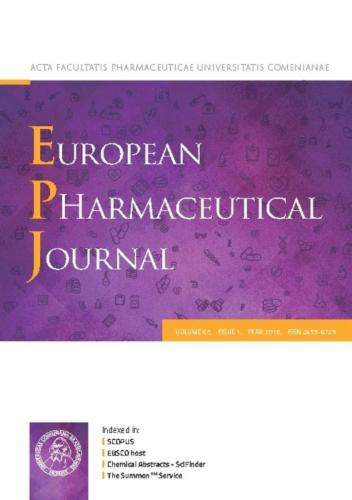Selected new approaches and future perspectives in liquid chromatography for the analysis of emerging modalities
IF 4.3
3区 医学
Q1 PHARMACOLOGY & PHARMACY
引用次数: 0
Abstract
Emerging biopharmaceutical modalities, such as genetic medicines and RNA therapies, offer transformative potential for treating previously intractable diseases. However, these complex drugs present unique analytical challenges due to their intricate structures, sophisticated manufacturing processes, and modality-specific product quality attributes. Liquid chromatography (LC) has emerged as a versatile tool for addressing these challenges, enabling precise characterization and quality control strategies. This review highlights recent advancements in LC technologies, including low-adsorption hardware, ultra-wide pore size exclusion chromatography (SEC) columns, and innovative separation modes such as slalom chromatography and pressure-enhanced liquid chromatography (PELC). These developments tackle issues such as non-specific adsorption, carryover, and inadequate selectivity while improving resolution and robustness for large biomolecules like mRNA, adeno-associated viruses (AAVs), and lipid nanoparticles (LNPs). Novel approaches, such as tandem SEC systems, gradient SEC columns, and dual stationary phase gradients, further expand the scope of LC techniques by enhancing separations for diverse analyte sizes and complexities. Additionally, practical innovations like bracketed injection methods and new enzymatic tools for oligo-mapping improve reproducibility, efficiency, and confidence in RNA sequence analysis. These advancements not only address current analytical limitations but also pave the way for regulatory-compliant approaches, which will support the broader adoption of LC in both discovery and quality control settings. As the field continues to evolve, these innovations are poised to play a pivotal role in ensuring the safety, efficacy, and consistency of next-generation therapeutics.

选择新的方法和未来的观点,在液相色谱分析的新兴模式
新兴的生物制药模式,如遗传药物和RNA疗法,为治疗以前的顽固性疾病提供了变革性的潜力。然而,这些复杂的药物由于其复杂的结构、复杂的制造工艺和特定模式的产品质量属性,提出了独特的分析挑战。液相色谱(LC)已成为解决这些挑战的通用工具,实现精确的表征和质量控制策略。本文综述了LC技术的最新进展,包括低吸附硬件,超宽孔径排阻色谱(SEC)柱,以及创新的分离模式,如激流色谱和压力增强液相色谱(PELC)。这些发展解决了诸如非特异性吸附、携带和选择性不足等问题,同时提高了mRNA、腺相关病毒(aav)和脂质纳米颗粒(LNPs)等大分子的分辨率和鲁棒性。新的方法,如串联SEC系统、梯度SEC柱和双固定相梯度,通过加强对不同分析物尺寸和复杂性的分离,进一步扩大了LC技术的范围。此外,实用的创新,如支架注射方法和用于寡核苷酸定位的新酶工具,提高了RNA序列分析的再现性、效率和可信度。这些进步不仅解决了当前的分析局限性,而且为符合法规的方法铺平了道路,这将支持LC在发现和质量控制环境中的广泛采用。随着该领域的不断发展,这些创新将在确保下一代治疗方法的安全性、有效性和一致性方面发挥关键作用。
本文章由计算机程序翻译,如有差异,请以英文原文为准。
求助全文
约1分钟内获得全文
求助全文
来源期刊
CiteScore
9.60
自引率
2.20%
发文量
248
审稿时长
50 days
期刊介绍:
The journal publishes research articles, review articles and scientific commentaries on all aspects of the pharmaceutical sciences with emphasis on conceptual novelty and scientific quality. The Editors welcome articles in this multidisciplinary field, with a focus on topics relevant for drug discovery and development.
More specifically, the Journal publishes reports on medicinal chemistry, pharmacology, drug absorption and metabolism, pharmacokinetics and pharmacodynamics, pharmaceutical and biomedical analysis, drug delivery (including gene delivery), drug targeting, pharmaceutical technology, pharmaceutical biotechnology and clinical drug evaluation. The journal will typically not give priority to manuscripts focusing primarily on organic synthesis, natural products, adaptation of analytical approaches, or discussions pertaining to drug policy making.
Scientific commentaries and review articles are generally by invitation only or by consent of the Editors. Proceedings of scientific meetings may be published as special issues or supplements to the Journal.

 求助内容:
求助内容: 应助结果提醒方式:
应助结果提醒方式:


